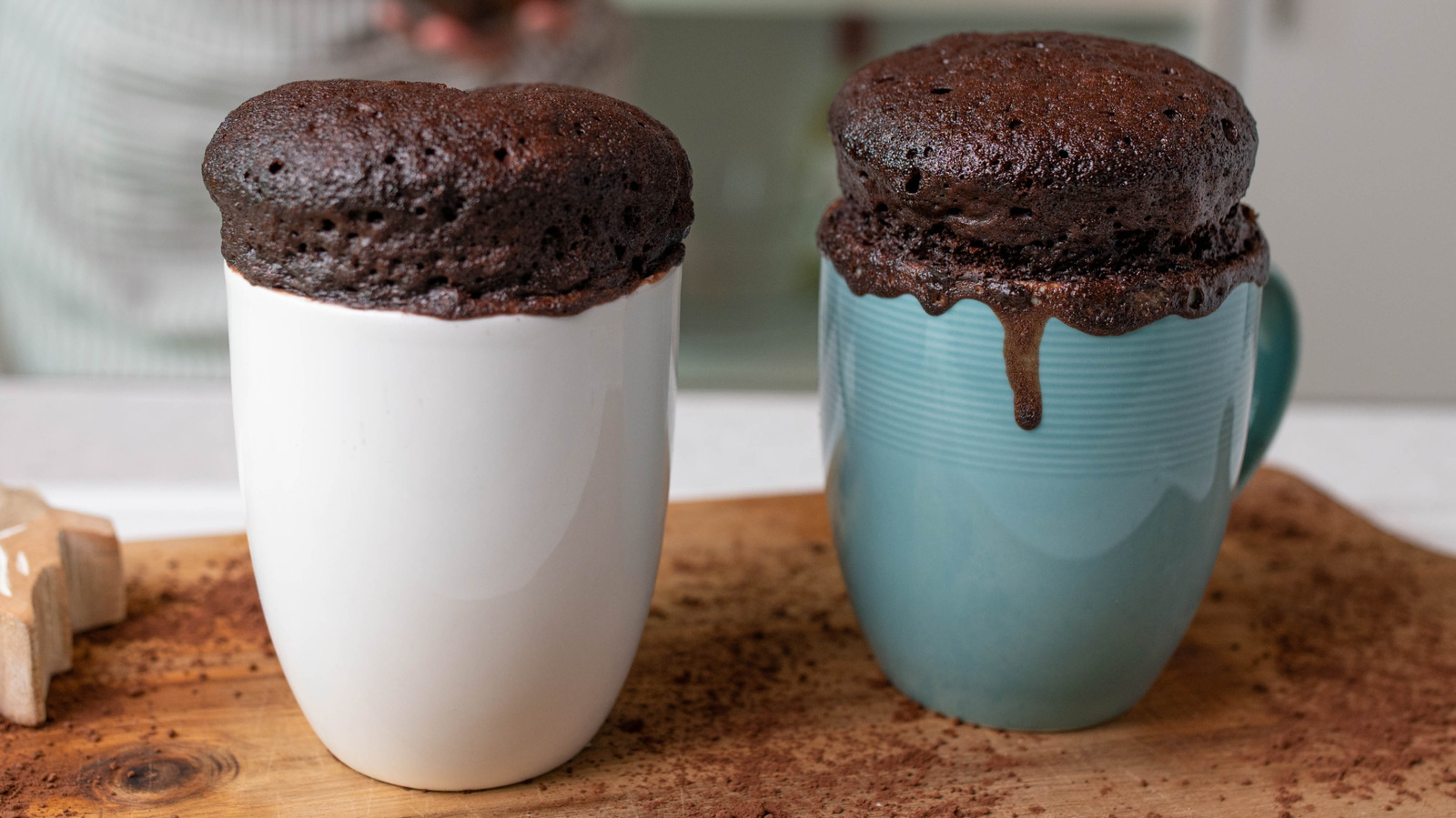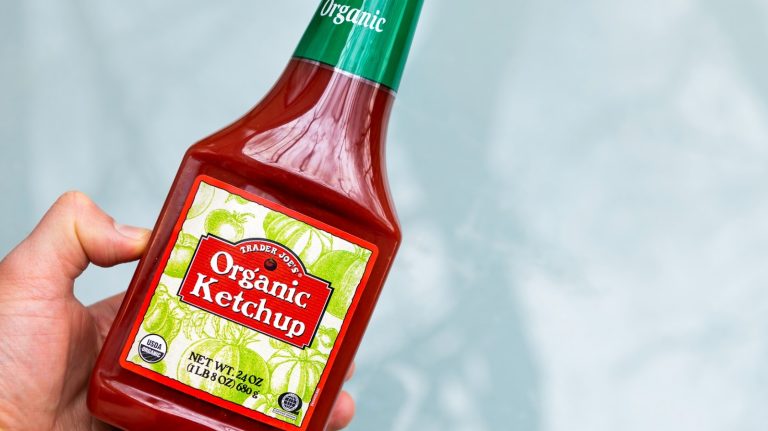A hard truth about baking is that all recipes require care and precision … even if your dessert is as tiny as a coffee mug and can be microwaved in seconds. Microwave mug cakes seem foolproof, but a careless approach can make the batter overflow as it cooks, creating a gooey yet burnt puddle. The most likely culprit (and the solution) are simple: Overfilling leads to a mess, so don’t fill the cup up close to the brim.
There is a way to rescue an overflowing cake, but it’s better to avoid the mishap by giving it room to rise. A good rule of thumb is to use a large cup and fill it halfway, if that much. Your lemon mug cake or 2-ingredient Oreo cake might look cute in a dainty little teacup, but a roomier choice could save you a lot of scrubbing. If your recipe calls for a specific size or type of mug, don’t ignore it — using a vessel of the wrong size always affects how the dessert bakes.
Additionally, watch the batter the entire time it heats up, so you can stop the microwave if it threatens to overflow. Pulling the cup out early to check if your mug cake is ready to eat can also prevent an overcooked, rubbery texture. Microwaves vary a lot in functionality, so it’s better to monitor your treat instead of setting and forgetting it.
More tips to prevent messy mug cakes
If you only fill your mug up halfway, but the batter still overflows, you may have added too much of a leavening agent such as baking soda or powder. These ingredients make a cake rise up nice and fluffy, but an overly heavy hand results in a sticky situation. Always follow the right ways to measure baking ingredients, no matter if you’re making a mug cake or a triple layer genoise. If you follow the instructions to a tee, but your microwave still gets slopped, try a different recipe that uses less leavener.
To further avoid a cake batter tsunami, don’t use self-rising flour in place of all-purpose or vice-versa. The self-rising stuff has baking powder added, so putting it in a recipe that already uses baking soda and/or powder is usually overkill. You can adjust your recipe to make the swap, but it’s easiest to just reach for the right flour, especially if you’re making an already-simple mug cake. As a final precaution, try putting a rimmed saucer or plate under the mug before heating. Even if you get distracted for a moment and the dessert goes from nicely-risen to a waterfall, the extra dish could save your microwave plate from a trip to the sink.






